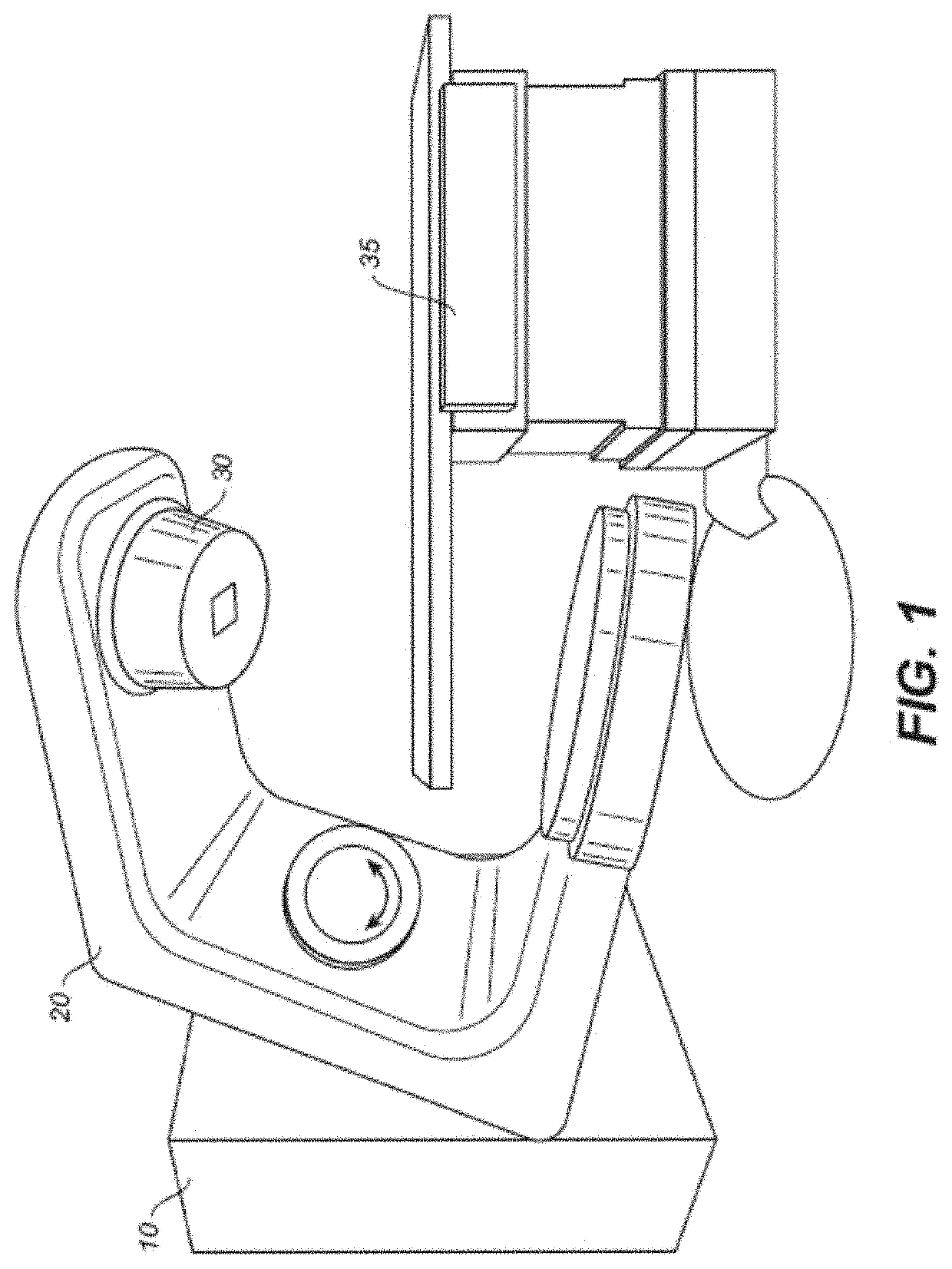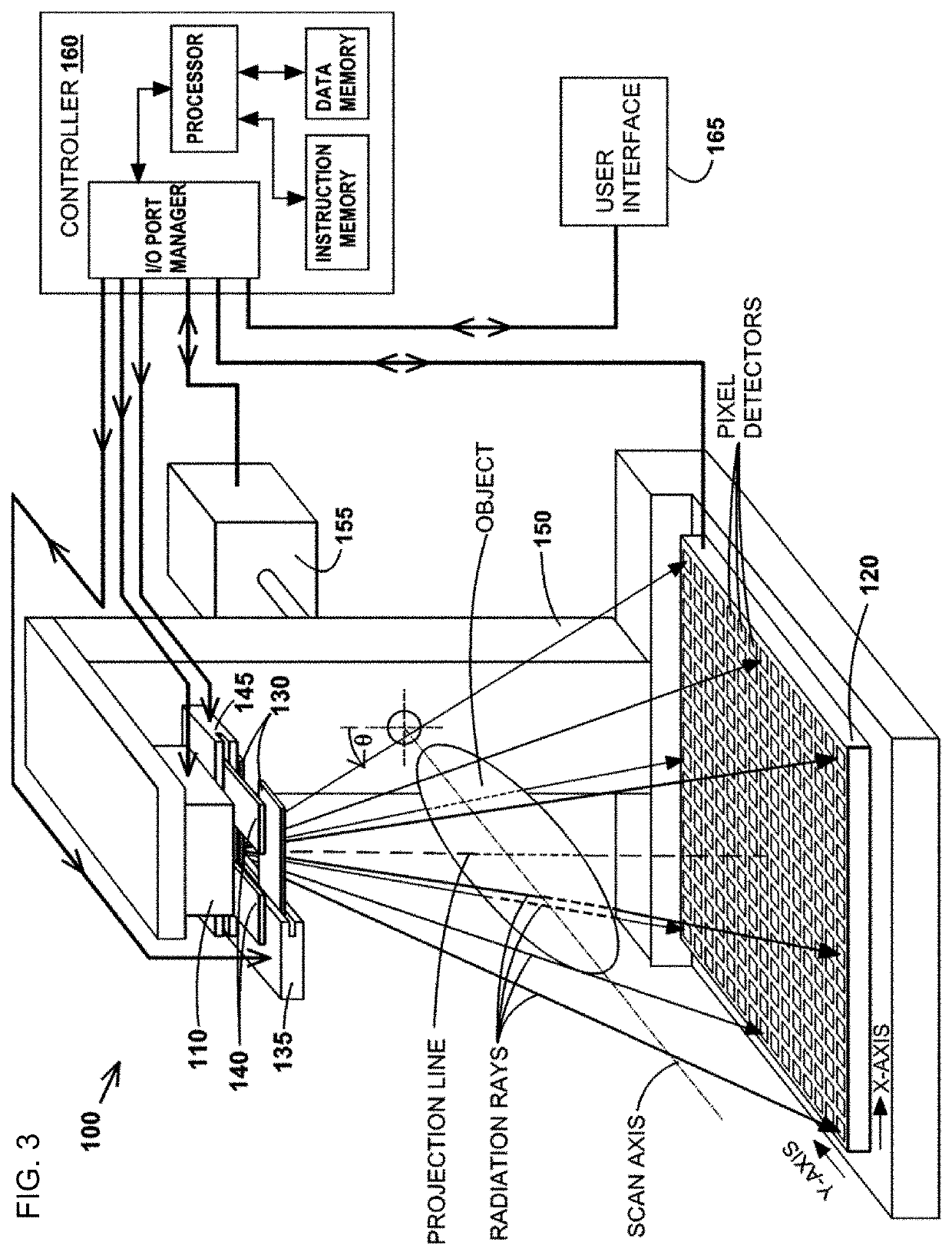Iterative image reconstruction in image-guided radiation therapy
a radiation therapy and image-guided technology, applied in tomography, therapy, instruments, etc., can solve the problems of poor cbct image discrimination in the abdominal and pelvic regions, difficulty in obtaining accurate matching positions, and inability to help patients
- Summary
- Abstract
- Description
- Claims
- Application Information
AI Technical Summary
Benefits of technology
Problems solved by technology
Method used
Image
Examples
Embodiment Construction
[0022]Image quality of state of the art three-dimensional onboard imaging for radiation therapy is deteriorated by image noise and image artifacts. Current techniques for using data from CBCT scans provide limited benefit for tailoring radiation therapy to the most current CBCT scan. Embodiments address such image quality problems by applying improved reconstruction techniques. Such improved reconstruction can involve iterations of using a reconstructed volume to simulate two-dimensional projections, which can then be compared to the actual projections images of the CBCT scans. A residual volume can be determined based on the comparison and a new reconstructed volume can be determined.
[0023]With such image reconstruction methods the image quality is enhanced and thus the patient positioning ability is increased. Other embodiment can use such reconstructed volumes to perform on-line adaptive planning for the radiation treatment. Such improvements to reconstructed volumes increase ima...
PUM
 Login to view more
Login to view more Abstract
Description
Claims
Application Information
 Login to view more
Login to view more - R&D Engineer
- R&D Manager
- IP Professional
- Industry Leading Data Capabilities
- Powerful AI technology
- Patent DNA Extraction
Browse by: Latest US Patents, China's latest patents, Technical Efficacy Thesaurus, Application Domain, Technology Topic.
© 2024 PatSnap. All rights reserved.Legal|Privacy policy|Modern Slavery Act Transparency Statement|Sitemap



